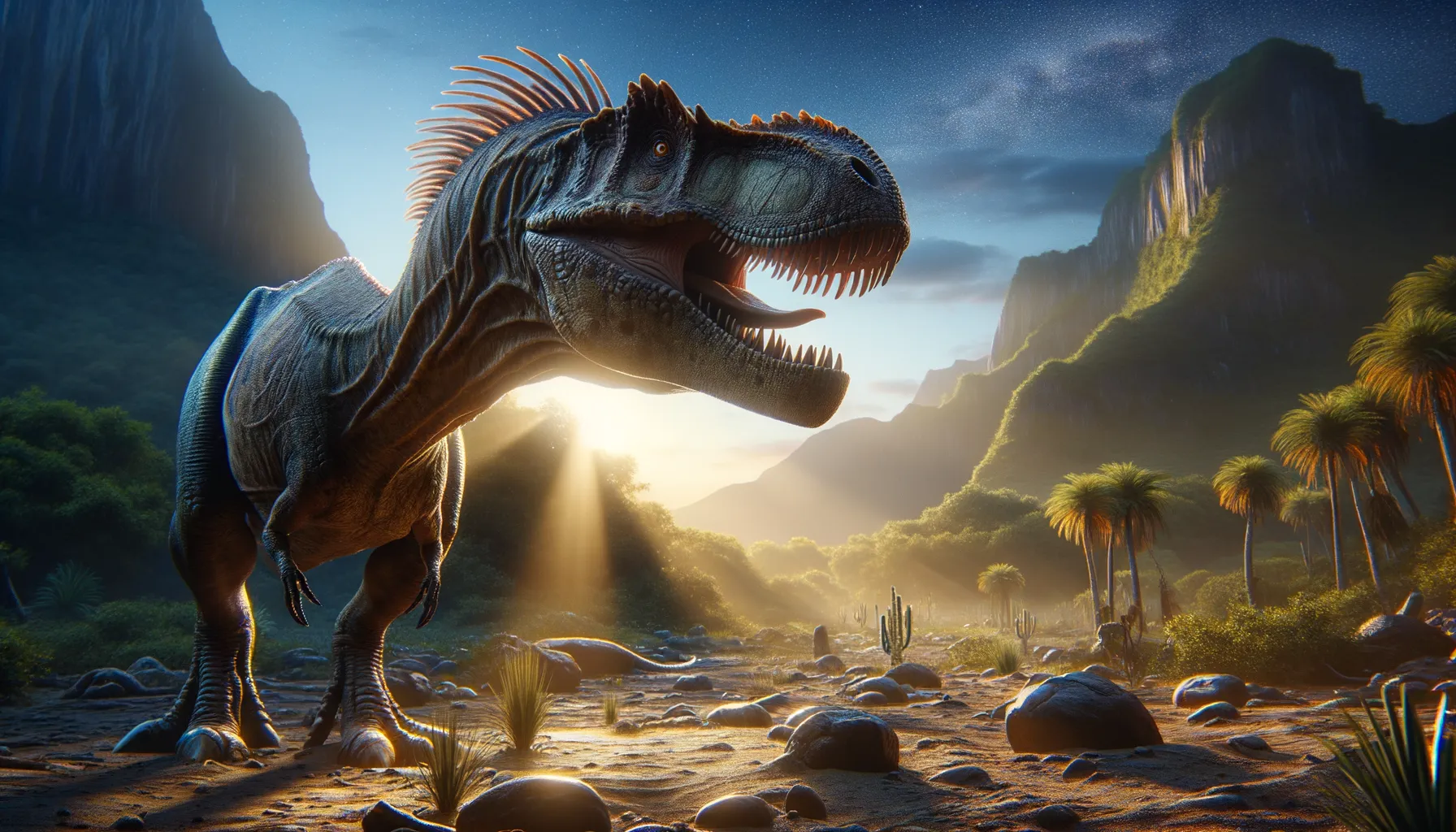
Monolophosaurus
Crested predator of the Jurassic age!
Period
Jurassic
Length
Up to 5.5 meters long.
Height
Around 1.8 meters tall at the hips.
Weight
Approximately 475 kg.
Monolophosaurus was a mid-sized theropod dinosaur known for its crest running along the top of its snout. This Jurassic predator roamed what is now China, about 160 million years ago. Its single crest likely played a role in communication or display, helping distinguish it from its peers. With a moderately slender build, it was well-adapted to hunting in its environment.
Diet
Monolophosaurus was primarily carnivorous, preying on smaller dinosaurs and other reptiles. Its sharp teeth and jaw design suggest it was adept at tearing flesh, making it a formidable predator of its time.
Hunting
This dinosaur likely used its strong legs and agility to ambush or pursue prey. Its keen senses aided in tracking movements, allowing it to detect and catch unsuspecting animals in dense vegetation or open plains.
Environmental challenges
Monolophosaurus faced several environmental challenges, including fluctuating climate conditions during the Jurassic period, which could affect food availability. Competition with other predators for hunting grounds was likely prominent. Additionally, ecosystem dynamics would often shift, requiring adaptability for survival.
Speed
Relatively agile with moderate speed.
Lifespan
Estimated to live up to 20 years.
First discovery
Discovered in 1981 in northern China.
Fun Facts
- Monolophosaurus means 'single-crested lizard' because it had a distinctive crest on its head.
- This dinosaur lived during the Middle Jurassic period, about 165 million years ago.
- Monolophosaurus was a theropod, a group of bipedal carnivorous dinosaurs.
- It was discovered in the Junggar Basin of China, which is known for revealing many dinosaur fossils.
- Monolophosaurus was approximately 5 meters (16 feet) long, a medium-sized predator of its time.
- The purpose of its crest is still debated, with theories ranging from species recognition to thermoregulation.
- Monolophosaurus's sharp teeth and claws suggest it was an active hunter, preying on smaller dinosaurs and animals.
Growth and Development
Young Monolophosaurus dinosaurs would grow rapidly to reach maturity, minimizing vulnerability to predators. Juveniles possibly lived in more secluded areas until they could fend for themselves effectively. Growth rates might have been influenced by food supply and environmental conditions.
Habitat
Monolophosaurus inhabited forested regions and open areas in what is now Asia. These areas supported diverse flora and fauna, providing ample hunting opportunities. Seasonal changes would influence water sources and vegetation, impacting the animal's habitat use.
Interaction with other species
Monolophosaurus likely interacted with various dinosaurs, competing for food with other theropods while preying on herbivores. It might have co-existed with larger sauropods, which could also provide scavenging opportunities. It would skillfully navigate local ecosystems amidst diverse dinosaur communities.
Natural lifespan
Its natural lifespan is estimated to be around 20 years.
Reproduction
Monolophosaurus likely laid eggs in secluded nests to protect them from predators. Hatchlings would be vulnerable at birth, requiring strategic nesting choices by the adults. Reproductive behaviors may have included territorial displays or calls to attract mates.
Social behaviour
Monolophosaurus might have displayed some social behaviors, such as group feeding or territory marking. Its crest could have been used for visual communication in groups or during mating rituals. Interactions would be driven by competition and cooperation for survival.
Fossil locations
Fossils of Monolophosaurus have predominantly been found in the Shishugou Formation of China. These findings have provided essential insights into its morphology and ecological niche. Excavations continue to uncover more about its environmental and paleobiological context.
